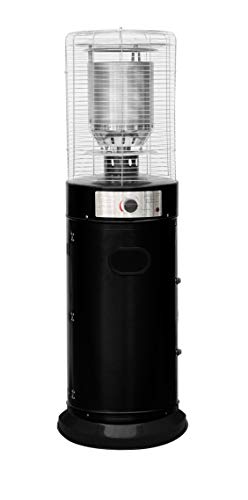Alfresco Heating: Transforming Outdoor Spaces into Year-Round Retreats
As the desire for outdoor living areas continues to grow, alfresco heating solutions have actually ended up being progressively popular among house owners and companies alike. With the right heating system, any patio, balcony, or garden can be changed into a year-round retreat, enabling people to enjoy their outdoor areas, no matter the season. This post explores the numerous types of alfresco heating, their benefits, factors to consider for installation, and frequently asked concerns about these systems.
Types of Alfresco Heating
When it concerns heating outdoor locations, several options are readily available. Each type provides unique advantages, depending upon the space to be heated and the specific requirements of the user.
1. Electric Outdoor Heaters
- Description: These heaters utilize electric power to produce heat. They can be installed on walls, ceilings, or used as portable systems.
- Benefits:
- Easy to set up and operate.
- No requirement for gas lines or refueling.
- Typically lower preliminary costs.
2. Gas Patio Heaters
- Description: Gas heaters typically use propane or natural gas and can be freestanding or mounted.
- Benefits:
- Provide immediate heat.
- Appropriate for bigger outdoor locations.
- Visual appeal with designs resembling outdoor fire pits.
3. Infrared Heaters
- Description: These heaters radiate heat directly to things and people rather than warming the air. They can be electrical or gas-powered.
- Advantages:
- Highly efficient, as little heat is lost to wind.
- Suitable for breezy locations.
- Silent operation.
4. Fire Pits and Outdoor Fireplaces
- Description: Traditional fire pits or built-in outdoor fireplaces offer a relaxing environment while providing heat.
- Benefits:
- Create a focal point for celebrations.
- Ecologically friendly.
5. Radiant Heating Systems
- Description: Installed beneath surfaces like decks or patios, these systems warm the flooring, developing warmth in the space above.
- Advantages:
- Invisible heating service.
- Offers even heat circulation.
| Heating Type | Energy Source | Setup Cost | Heating Efficiency |
|---|---|---|---|
| Electric Outdoor Heaters | Electric | Low to Moderate | Moderate |
| Gas Patio Heaters | Propane/Natural Gas | Moderate to High | High |
| Infrared Heaters | Electric/Gas | Low to Moderate | Very High |
| Fire Pits/Outdoor Fireplaces | Wood/Gas | Moderate to High | Differs |
| Radiant Heat Systems | Electric/Gas | High | Really High |
Benefits of Alfresco Heating
Investing in alfresco heating can significantly improve outdoor experiences. Consider the following advantages:
- Extended Usability: Alfresco heating makes outdoor spaces functional throughout the year, even during colder months.
- Increased Comfort: By keeping a comfortable temperature, people can take pleasure in outdoor meals, gatherings, or peaceful minutes without being hindered by the chilly air.
- Boosted Property Value: Welcoming outdoor spaces can increase the worth of a residential or commercial property, making it an attractive feature for possible purchasers.
- Ecologically Friendly: Many alfresco heating solutions, especially gas and wood options, can have a lower carbon footprint compared to conventional heating methods.
- Versatility: With many styles offered, alfresco heaters can complement different outdoor styles and settings.
Factors to consider for Installation
While alfresco heating presents various advantages, particular aspects should be thought about before installation:
- Size of the Area: Assess just how much space needs heating. Bigger locations might require multiple heating units.
- Heating Requirements: Different heating types have differing heating capacities. Determine the suitable type based upon your needs.
- Installation Location: Evaluate where to install heating systems. Elements such as wind direction, outdoor furnishings arrangement, and patio covers can affect effectiveness.
- Fuel Source: Choose a heating choice based upon readily available fuel sources (gas, electricity, wood) and the associated costs.
- Local Regulations: Be mindful of regional regulations relating to outdoor heating, specifically concerning gas fire pits or open flames.
FAQs about Alfresco Heating
1. How do I select the right outdoor heater for my space?
Selecting the best outdoor heater depends on a number of factors including the size of the area, the desired heating capacity, and your budget. Examine your specific needs and consider seeking advice from a heating expert for recommendations.
2. Are electrical heaters more energy-efficient than gas heaters?
Normally, electric outdoor heaters are more efficient as they convert many of their energy into heat. Nevertheless, the energy sources and costs can influence overall effectiveness, so consider the local electrical power and gas rates.
3. Can I utilize indoor heating solutions outdoors?
No, indoor heating solutions are not created for outdoor usage and can position security dangers when exposed to the elements. Always go with products particularly created for outdoor conditions.
4. How do I keep my outdoor heating unit?
Upkeep will vary based on the type of heater. Most electric heaters require little to no maintenance, while gas heaters might require regular examination of the gas line and burner assemblies. Follow the manufacturer's guidelines for particular upkeep suggestions.
5. Is alfresco heating safe?
Yes, when set up and utilized correctly, alfresco heating systems are safe. Always follow the producer's guidelines, and keep flammable materials far from heating sources.
Alfresco heating can significantly enhance outdoor living spaces, enabling pleasure despite the season. By understanding the numerous heating options, their advantages, and setup considerations, homeowners and organization operators can create welcoming and comfortable outdoor environments. Whether it's for hosting events or enjoying quiet evenings under the stars, the best heating service can change outdoor areas into a real retreat.

